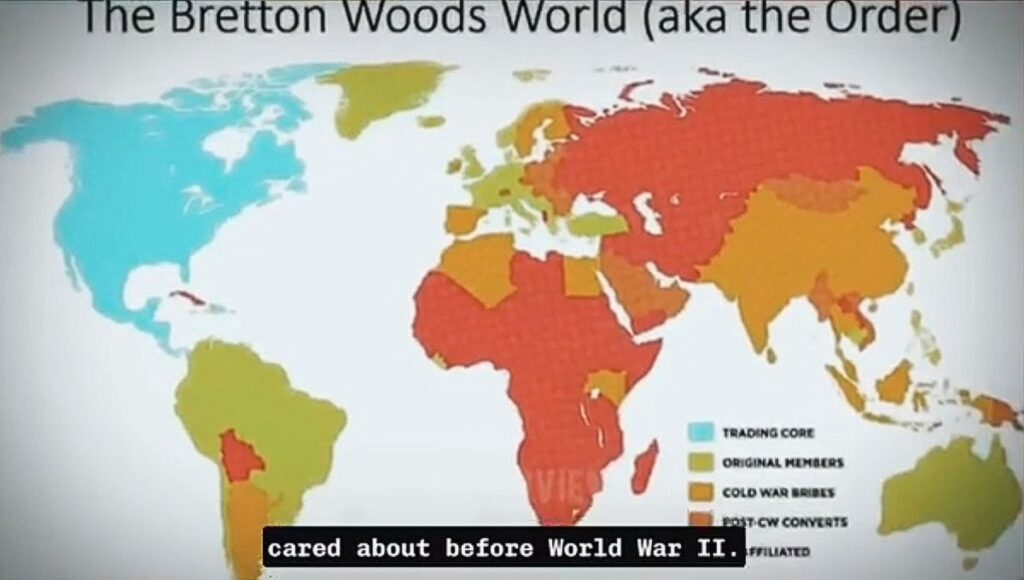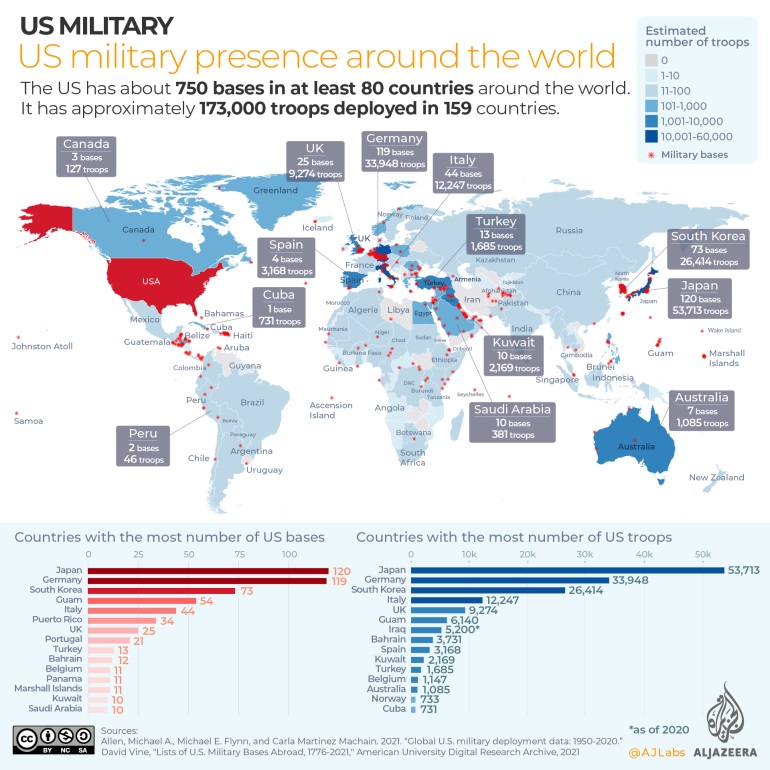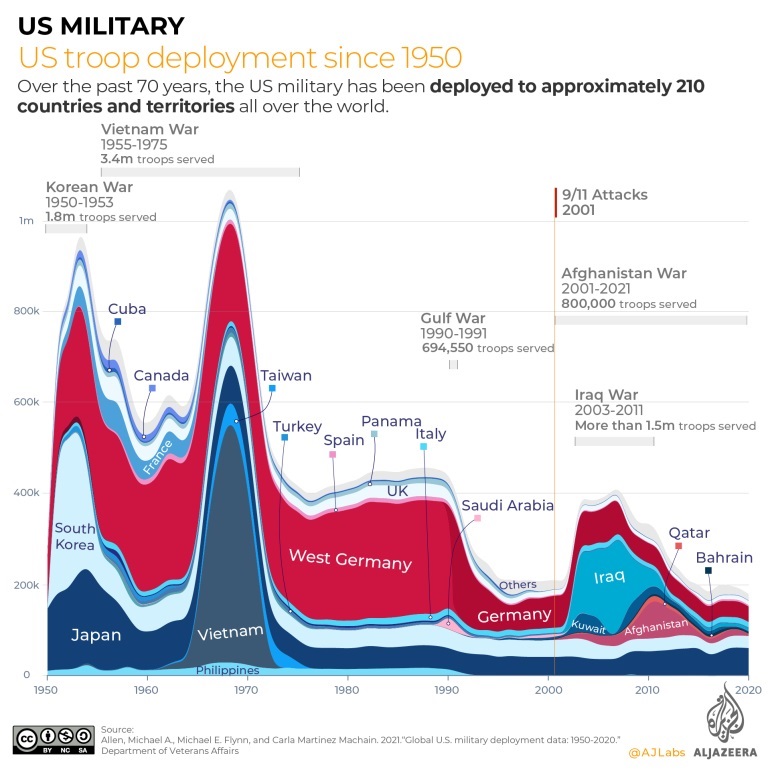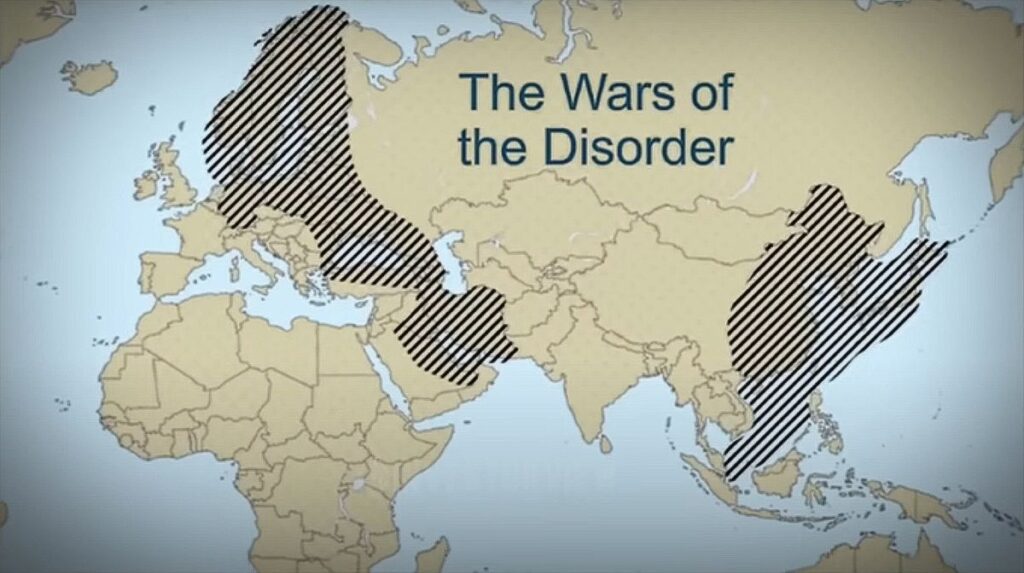The Bretton Woods system was a monetary system that established a New World Order at the end of World War II in 1944 during a meeting of the allied nations in Bretton Woods, New Hampshire. The system was created to establish a stable economic order by fixing the exchange rates of major currencies to the US dollar and was the birth of globalization.
The Bretton Woods system played a significant role in post-war economic growth. It facilitated international trade and investment by providing a stable exchange rate system and an international trade framework. This framework allowed the participating countries to reap the benefits of efficient supply chains that lead to high levels of productivity and subsequent higher standards of living. See this global political map below.
The US, since World War II, has provided, until more recently, the security umbrella for this economic Bretton Woods regime across the globe. The US has, in a sense, been the guarantor of global trade. To support this, see the US’s massive global military presence in the chart below and learn more here.
However, this system faced several challenges over the years, including a persistent US trade deficit and inflationary pressures. In 1971, the US government suspended the convertibility of the US dollar to gold, effectively ending the initial Bretton Woods system. Since then, we have continued to hold a modified Bretton Woods system via a global fiat currency system.
Unfortunately, this fiat currency system has allowed politicians, via credit, to debase the currency to buy votes. The burgeoning credit, currency debasement, and a weakened economy have caused the US to begin to degrade its military power and influence over the modified Bretton Woods globalized trading system.
This is very similar to what has happened to other empires of the past (e.g., the British Empire or Rome). In the chart below, we can see that, though modern militaries need fewer troops than before, the global US military influence has been on a steady decline since WWII.
After WWII, the US has essentially been the guarantor of global trade. If this ends, the world begins to deglobalize into a New World Disorder. In this disorder, many of the citizens of the West will no longer be able to enjoy the economic benefits or the security benefits seen in the post-WWII area.
The geopolitical winds of change are about to change the world if the West begins to fade. Change for some will be positive, and for others, negative. However, in either case, initially, all will feel the pain of change. Some have called this the coming “Great Reset.” The change also brings conflict as new alignments occur.
One may ask where could a potential conflict occur on the globe. As strange as it may seem, most conflicts in the world occur on less than 5% of the land masses across the globe. The map in the infographic below shows the geographic area (shaded areas) where most conflicts have occurred in history.
If the word begins to deglobalize, the above map will give a good idea of where potential conflicts will come from – in other words, a map of the New World Disorder.
Peter Zeihan, who is a geopolitical analyst and author, does a reasonable presentation that lays out much of this premise of the collapsing New World Order and the coming New Word Disorder in the video below.
See more Chart of the Day posts.
By Tom Williams



















































